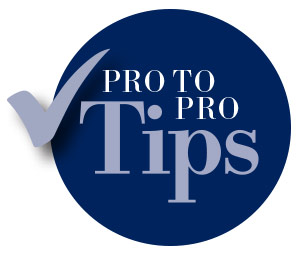
By Linda Conlin, Pro to Pro Managing Editor

So you want to own an optical shop. Great! Be your own boss; do things your way; make a difference. But ownership isn’t something to jump into. Three basic questions need solid answers first: Why? What? How?
The most important question is “Why.” Why drives what you choose to do. Do you think you can offer different products or services from what are currently being offered in your area? Do you think you can offer better service and knowledge than anyone around? Do you have an innovative idea about doing business that no one else is utilizing? “People don’t buy what you do; they buy why you do it. If you don’t know why you do what you do… then how will you ever get people to buy something from you, or more importantly, to be loyal and want to be a part of what it is that you do?” (“Simon Sinek: How great leaders inspire action,” Ted Talk)
Tip: Being able to deliver your Why to the public is the key role of marketing, and crafting this message will become one of the most important things you do as a business owner. Today’s consumers want to know your story.
The next question is “What.” What will you offer that will differentiate your practice from the competition? Identify what you will sell and what services you offer. Know how they benefit your customers and what the product life cycle looks like. It’s crucial to understand your consumer base from the outset. Market research lets you reduce risks even while your business is still just a gleam in your eye. The Small Business Administration (SBA) recommends answering the following questions to get a good sense of your market:
- Demand: Is there a desire for your product or service?
- Market size: How many people would be interested in your offering?
- Economic indicators: What is the income range and employment rate?
- Location: Where do your customers live and where can your business reach?
- Market saturation: How many similar options are already available to consumers?
- Pricing: What do potential customers pay for these alternatives?
You can do market research using existing sources, or you can do the research yourself and go direct to consumers. Asking consumers yourself can give you a nuanced understanding of your specific target audience. Surveys, questionnaires, focus groups and interviews are a few DIY methods you can use. Important factors to consider include level of competition, threat of new competitors or services, and the effect of suppliers and customers on price.
Tip: The SBA offers a list of market research resources, free small business data and trends on its website. (sba.gov/business-guide/plan-your-business/market-research-competitive-analysis#id-free-small-business-data-and-trends)
Third is “How.” Before your business opens its doors, you’ll have bills to pay. Understanding your expenses will help you launch successfully. Start-up costs include office space, equipment and supplies, communications, utilities, licenses and permits, insurance, lawyer and accountant, inventory, employee salaries, advertising and marketing, and a website.
Now that you have a good estimate of costs, where will the money come from? Self-funding, also called bootstrapping, lets you leverage your own financial resources to support your business. Self-funding can come in the form of turning to family and friends for capital, using your savings accounts or even tapping into your 401(k). With self-funding, you retain complete control over the business, but you also take on all the risk.
Another option is to look for individual investors. Be sure to do enough background research to know if the investor is reputable and has experience working with start-up companies. Crowdfunding is another option. Crowdfunders aren’t technically investors, because they don’t receive a share of ownership in the business and don’t expect a financial return on their money. Instead, crowdfunders expect to get a “gift” from your company as thanks for their contribution. Often, that gift is the product you plan to sell.
You also can consider a small business loan from banks and credit unions, and the SBA can agree to guarantee your loan. That way, the bank has less risk and is more willing to give your business a loan. You also may be able to get a grant or loan from non-profit organizations with strong community partnerships that connect public and private resources with underinvested places and people working to access opportunities.
Tip: Before you access any of these resources, have a business plan, expense sheet and financial projections for the next five years. These tools will give you an idea of how much funding you’ll need and will help the bank know they’re making a smart choice by giving you a loan.
Business ownership isn’t for the faint of heart. You must be prepared to feel the weight of every single decision that needs to be made. But for those of us who understand the risks, the rewards (emotional and financial) can be pretty great.












